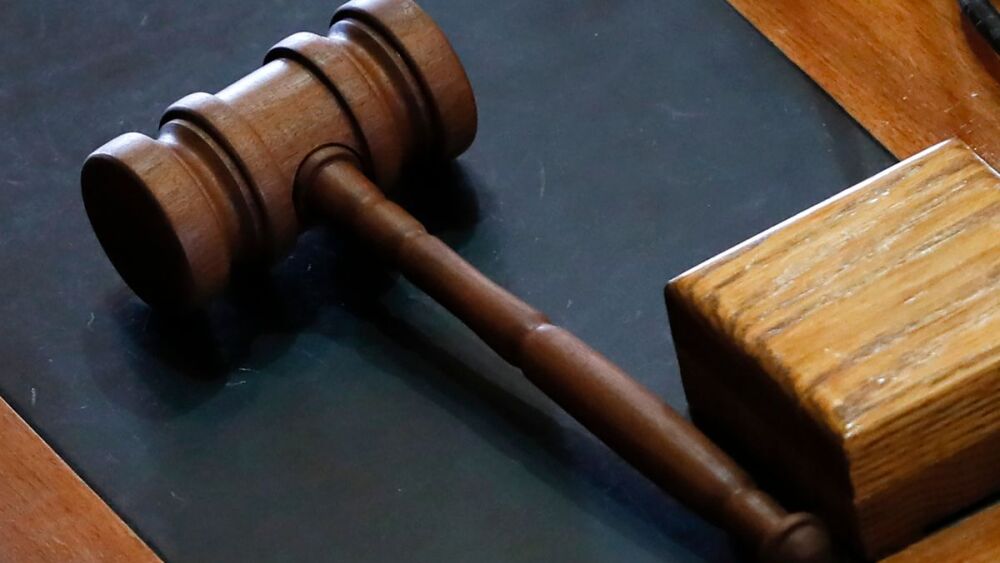The Salt Lake City Police Department (SLCPD) received a 911 call reporting that a man had displayed a gun. The unidentified caller described the man with the gun and said he was with a second man whom he also described. Responding officers saw Dillon Taylor and two other men walking in the area where the caller saw the gunman. Two of the men matched the caller’s description of the gunman and his companion.
Officers approached them and two of the men immediately obeyed commands to stop and show their hands. Dillon Taylor, the third man in the group, ignored the officers’ commands, made a 180-degree turn and walked away. An officer yelled more than once at Taylor to stop but he continued to walk away.
Two officers followed behind Taylor with guns drawn but not pointed at him. Officer Sylleloglou moved parallel to Taylor and again ordered him to stop and show his hands. Officer Cruz followed directly behind Taylor who walked with hands at his side. Taylor, who was wearing baggy pants and an untucked baggy shirt, reached down with both hands and pulled up his pants while continuing to walk away.
Taylor raised his hands to waist level and appeared to place one or both hands in the front of the waistband of his pants. Both officers pointed their pistols at Taylor but kept their fingers off the trigger.
Sylleloglou repeated his commands for a show of hands. Taylor responded by saying, “What are you going to do? Come on … shoot me.” Cruz yelled at Taylor to “get your hands out now.” At this point, Taylor turned around and directly faced Cruz. While facing Cruz, he began walking backward with both hands hidden inside his waistband. Taylor appeared to be moving his hands in a “digging” motion and “manipulating something.” Officer Cruz told Taylor once more to remove his hands, but Taylor responded by saying, “Nah, fool.”
Cruz started to order Taylor to remove his hands again when Taylor rapidly pulled his left hand up from inside his waistband, lifting his shirt in the process. Virtually simultaneously, Taylor removed his right hand from inside his waistband. Taylor’s sudden action was, according to the court, “consistent with the drawing of a gun.” At that moment Taylor was approximately 10 to 12 feet away from Cruz. Officer Cruz placed his finger on the trigger and fired twice, killing Taylor. Taylor was subsequently found to be unarmed.
Officer Sylleloglou witnessed the same rapid hand motions by Taylor and removed his finger from his pistol’s frame and placed it on the trigger. Although he did not fire, he stated that this was the first time in his nine-year career that he did so, except on the firearms training range.
The lawsuit
Taylor’s estate filed a lawsuit in federal court pursuant to 42 U.S.C. § 1983 against the city and Officer Cruz alleging excessive force in violation of the Fourth Amendment. The federal district court judge dismissed the lawsuit against the city and officer Cruz, ruling that Cruz’ conduct was objectively reasonable under the circumstances. Taylor’s Estate filed an appeal with the Tenth Circuit Federal Court of Appeals. [1]
The Tenth Circuit decision
The Tenth Circuit affirmed the district court’s dismissal of the lawsuit and observed that “the totality of the circumstances indicates that – by the time Officer Cruz discharged his gun – he reasonably perceived that Mr. Taylor posed an immediate, mortal threat to his safety or the safety of others.” “We conclude that Officer Cruz acted reasonably even if he had a mistaken belief as to the facts establishing the existence of exigent circumstances,” i.e., that Taylor was drawing a gun from his waistband.
The court stated, “Although Mr. Taylor was unarmed, that does not resolve whether the officers violated his constitutional rights. The salient question is whether the officers’ mistaken perception that Mr. Taylor was about to use a firearm were reasonable.” [2] The court answered this question by stating, “the undisputed material facts and video and photographic evidence of the moments when Mr. Taylor was shot demonstrate that a reasonable officer would believe that Mr. Taylor made a hostile motion with a weapon towards the officers.”
A scientific study on waistband firearm draws
The November/December 2000 issue of Police Marksman Magazine featured the results of a study conducted by Dr. William Lewinski, director of the Force Science Institute. [3] The study involved 25 college students who were provided with a .22 caliber revolver that they positioned in their right-side waistband. Upon their own volition, participants each drew the gun from their waistband and fired from their right hip. The average time for participants to draw and fire was .23 of one second. The fastest time to draw and fire was .09 hundredths of a second (slightly faster than 1/10 of a second).
The study also involved a slight variation in which the participants were instructed to draw the gun from their waistbands and fully extend their shooting arm before discharging the weapon. The average time for discharge in the latter instance was .26 of a second, with the quickest time once again at .09 hundredths of a second.
There is no way for a law enforcement officer to successfully counter or stop either of the waistband draws and discharges described in the Lewinski study. The speed involved in bullet discharge in both situations is simply unmatchable.
Former FBI Academy firearms instructors John Hall and Urey Patrick reported in their book “In Defense of Self and Others” that it will take approximately 0.7 to 1 second for an officer to recognize the nature of a deadly threat being launched against them. [4]
A separate Lewinski study determined that once an officer recognizes the deadly threat with his/her firearm drawn and pointed, it would take an average of .31 of a second to fire one shot. [5]
An officer reaction time of 1 to 1.3 seconds would permit a waistband shooter to fire a minimum of 4 shots (4x .23) before an officer could react to the threat. Such a scientifically proven outcome is totally unacceptable from a law enforcement perspective. This factor may be the primary reason that almost 80% of the officers murdered by firearms in America annually never fire their own weapons. [6]
Although the Tenth Circuit was apparently unaware of the scientific studies that support their decision, they still were able to recognize the extreme danger that the officers, in this case, were facing. Credit to the court for applying logic and reason to their decision.
Conclusion
Law enforcement officers must be totally cognizant of the “deadly reactionary gap.” This gap involves the time between an officer being presented with a deadly threat against their life, the time it takes to fully comprehend the nature of the threat, and the time it takes to appropriately react and attempt to counter that threat.
The existence of the deadly reactionary gap makes it critically important for officers to carefully monitor a suspect’s words and movements to narrow the time it takes to react to a deadly threat or better still, to stop it before it begins.
Failure of a suspect to obey an officer’s clear commands, particularly with respect to a show of hands, must be taken seriously as a red flag warning of bad things to follow.
Police supervisory officials must take every opportunity to educate not only officers under their command but also judges, prosecutors, lawyers, the media and the public of the danger officers face daily from action v. reaction and the deadly reactionary gap.
References
1. Estate of Dillon Taylor v. Salt Lake City; Bron Cruz, (No. 19-4085) (10th Cir. 2021).
2. For purposes of simplicity and clarity, some internal quotes and case citations are being omitted in this analysis.
3. Lewinski W. Why is the Suspect Shot in the Back. The Police Marksman, November/December 2000, pp. 20-28.
4. Hall J, Patrick U. In Defense of Self and Others, p. 108.
5. Lewinski W, Hudson B. Time to Start Shooting? Time to Stop Shooting? The Tempe Study. The Police Marksman Magazine, September/October 2003.
6. FBI, Law Enforcement Officers Killed and Assaulted (LEOKA) statistics show that between 2011 and 2020, 78.32% of the officers murdered by firearms did not fire their own weapons.



